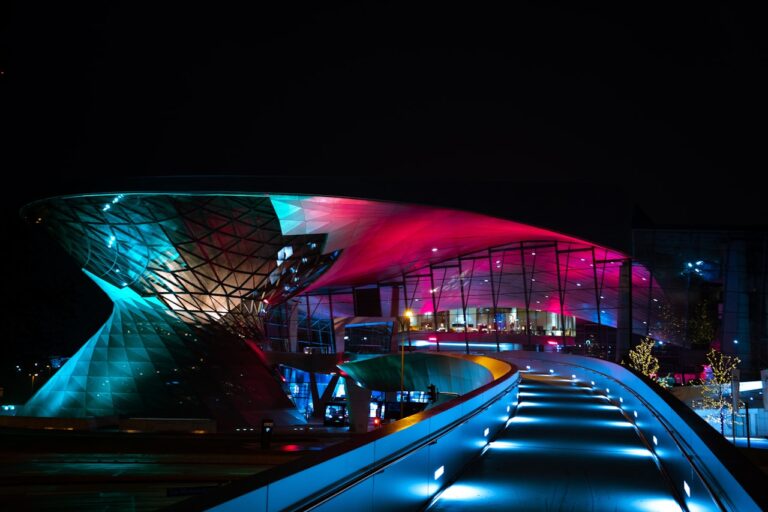Amsterdam Travel Guide

Amsterdam captivates visitors with its historic canals, world-class museums, and lively culture. Travelers benefit from efficient public transport, though cycling offers an authentic experience.
- Getting Started With Your Amsterdam Travel Plans
- How to Travel in Amsterdam With Ease
- Top Attractions to Include in Your Amsterdam Travel Itinerary
- Where to Stay: Amsterdam Travel Guide to Neighborhoods
- Eating and Drinking Around Amsterdam
- Shopping and Markets
- Day Trips and Places to Travel From Amsterdam
- Cultural Tips and Etiquette for Visitors
- Final Travel Amsterdam Essentials
- Wrapping Up
- Most Asked Question
The Anne Frank House and Rijksmuseum demand advance reservations, while neighborhoods beyond the center reveal local charm. Culinary highlights range from stroopwafels to Michelin-starred dining.
Winter offers savings, while spring showcases tulips. This enchanting city rewards those seeking both iconic attractions and hidden gems.
Key Takeaways:
Hide- Book major attractions like Anne Frank House in advance to avoid sell-outs, especially during peak season. 📅
- Navigate the city efficiently using the extensive public transport network or rent bicycles for an authentic local experience. 🚲
- Experience Amsterdam's diverse neighborhoods beyond tourist centers for a richer cultural immersion and local interactions. 🌆
- Visit during November through February for significant savings on accommodations and fewer crowds at attractions. 💰
- Explore day trips to nearby destinations like Zaanse Schans (windmills), Haarlem, Utrecht, and The Hague via efficient train services. 🌬️
Getting Started With Your Amsterdam Travel Plans
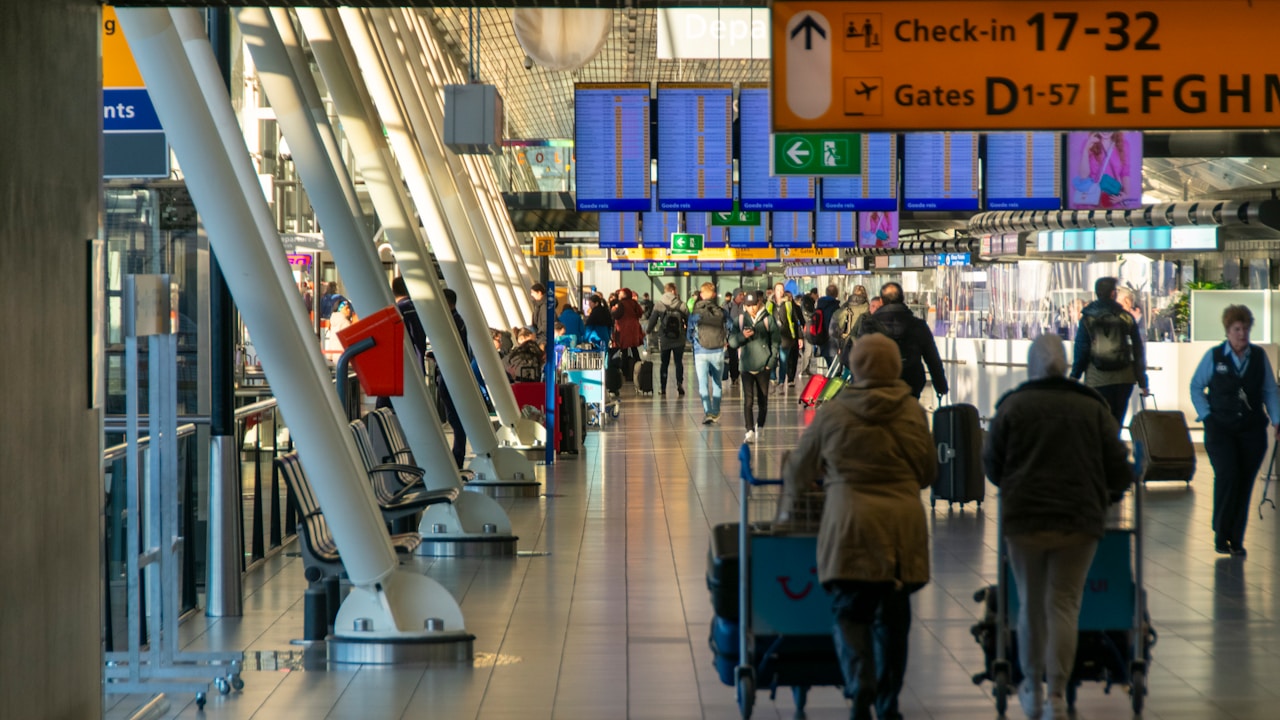
Travelers commencing on their first Amsterdam adventure should familiarize themselves with the city’s efficient public transport system, museum reservation requirements, and canal navigation options.
Winter offers festive Christmas markets and ice skating while summer brings lively outdoor festivals and perfect weather for cycling through Amsterdam’s iconic neighborhoods.
The projected 2025 tourism landscape indicates advance booking for major attractions will become increasingly essential, with new sustainability initiatives likely affecting transportation and accommodation options.
Planning Your First Trip: Travel Guide Amsterdam Basics
First-time visitors to Amsterdam should familiarize themselves with the city’s efficient public transport system while being cautious of its notorious bike lanes.
Many tourists mistakenly focus only on the Red Light District and coffeeshops, overlooking Amsterdam’s rich cultural heritage including world-class museums and historic canal houses.
Travelers often underestimate the changeable Dutch weather, so packing layers and rain gear remains essential regardless of when you visit.
1. Key Tips for First-Time Visitors to the City
When planning a maiden voyage to Amsterdam, visitors should arm themselves with a few essential insights that will greatly enhance their experience in the Dutch capital.
The Amsterdam travel guide offers these fundamental tips for traversing this lively city:
- Purchase an Amsterdam Travel Card for unlimited public transport
- Rent bicycles for authentic Amsterdam travel experiences
- Book museums in advance to avoid lengthy queues
- Explore neighborhoods beyond the tourist center
- Learn basic Dutch phrases to connect with locals
2. Common Mistakes to Avoid When You Travel Amsterdam
While mastering the tips for first-time visitors builds a foundation for experiencing Amsterdam, understanding what not to do proves equally valuable.
Many travelers consult an Amsterdam travel guide 2025 but still make common mistakes: overlooking best places to travel from Amsterdam for day trips, limiting exploration to tourist centers, photographing Red Light District workers, or neglecting to research where to travel from Amsterdam by public transport.
When to Visit: Seasonal Highlights and Amsterdam Travel Guide 2025 Advice
Amsterdam’s calendar brims with seasonal events that transform the city throughout the year, from spring’s Tulip Festival to winter’s magical Light Festival.
Weather plays a vital role in planning your 2025 Amsterdam itinerary, with summer bringing pleasant temperatures for canal cruises while autumn offers fewer crowds and stunning foliage.
Visitors should consider their tolerance for rain and temperature preferences when selecting travel dates, as Amsterdam’s maritime climate can deliver unexpected weather patterns year-round.
1. Events and Festivals by Month
The cultural calendar of Amsterdam pulses with lively celebrations throughout the year, offering visitors a chance to experience the city’s unique spirit across all seasons.
Many festivals provide perfect opportunities to explore places to travel from Amsterdam, as neighboring towns often host complementary events.
- King’s Day (April) – streets transform into bright orange-hued celebrations
- Amsterdam Light Festival (December) – illuminating the historic canals with artistic displays
- Pride Amsterdam (August) – colorful canal parades celebrating freedom and love
- IDFA Documentary Festival (November) – thought-provoking films from global perspectives
- Amsterdam Dance Event (October) – electronic music takeover across 200+ venues
2. How Weather Affects Your Amsterdam Travel Itinerary
Weather shapes every Amsterdam experience, from tranquil canal cruises to bustling museum visits, making timing a key factor in travel planning.
Amsterdam’s mild maritime climate features distinct seasons, each offering unique advantages.
Summer brings warm cycling weather and outdoor festivals, while winter transforms canals into potential skating rinks.
Spring tulips and fall foliage create magical backdrops, though rain remains a possibility year-round.
How to Travel in Amsterdam With Ease
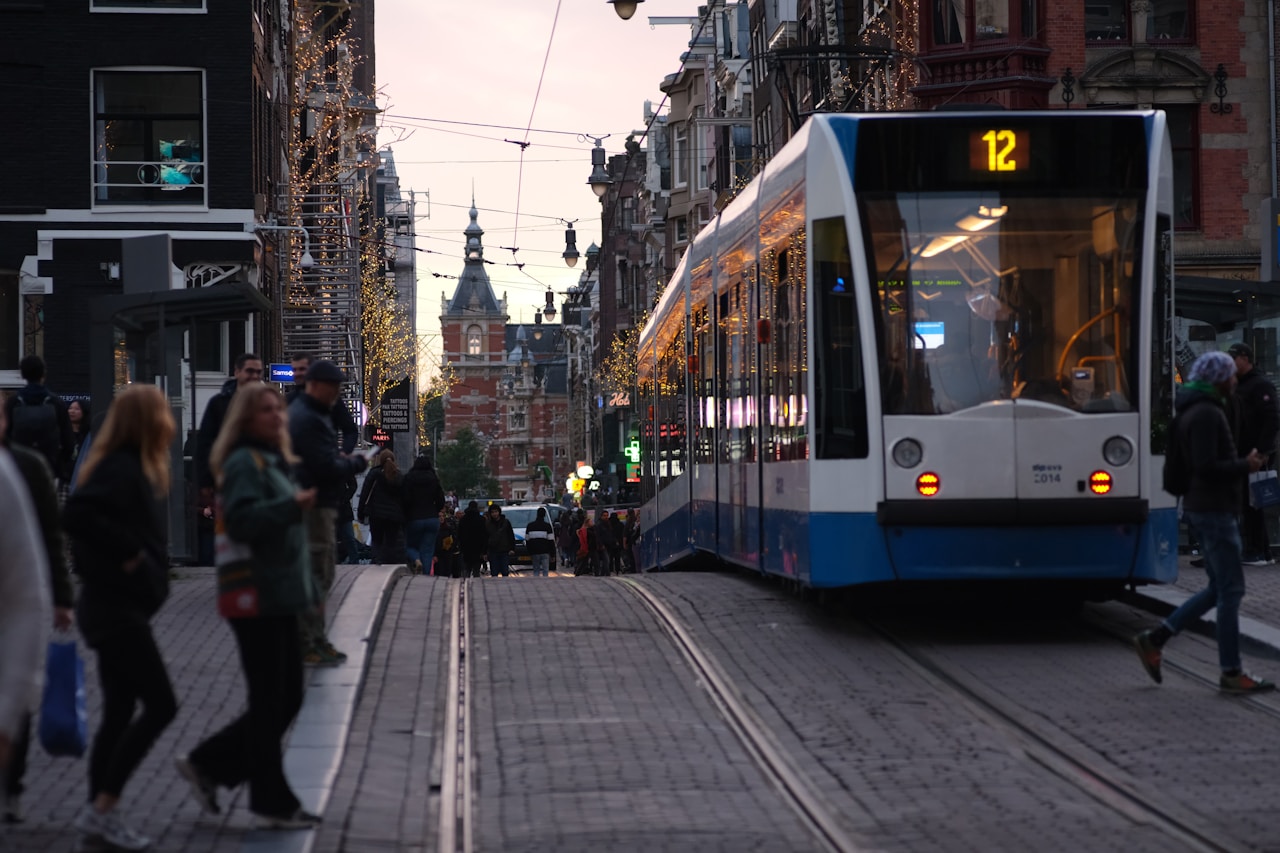
Amsterdam offers visitors multiple efficient transportation options to explore its picturesque streets and canal-lined neighborhoods.
The city’s extensive public transit system, including trams, buses, and metros, provides convenient access to major attractions and distant neighborhoods alike.
Many travelers, however, prefer to experience Amsterdam like locals do—by foot or bicycle—taking advantage of the flat terrain and dedicated cycling infrastructure that makes the city one of Europe’s most bike-friendly capitals.
Public Transportation in Amsterdam: How to Travel in Amsterdam Efficiently
Amsterdam’s extensive public transportation network offers visitors efficient travel via trams, buses, and metro lines that connect all major attractions and neighborhoods.
Travelers can purchase tickets at stations, from drivers, or through the GVB app, with options ranging from single-ride tickets to multi-day passes.
The Amsterdam Travel Ticket and I Amsterdam City Card provide the best value for tourists planning to use public transport frequently during their stay.
1. Using Trams, Buses, and the Metro System
Finding your way around the Netherlands‘ capital is remarkably straightforward thanks to its extensive network of trams, buses, and metro lines.
The integrated system connects all districts with reliable service from early morning until midnight.
- Glide along historic canals on sleek trams with panoramic windows
- Bypass traffic with underground metro journeys between major hubs
- Explore outlying neighborhoods via comfortable, frequent buses
- Navigate the entire network with a single, liberating OV-Chipkaart
- Experience the city like locals, without the constraints of tour groups
2. Where to Buy Tickets and Which Passes to Choose
Guiding through Amsterdam’s public transportation system becomes even more effortless when armed with the right tickets and passes.
Travelers can purchase these at GVB ticket machines, service desks, or via the official app.
The OV-chipkaart offers the best value for multiple journeys, while the Amsterdam Travel Ticket combines airport transfers with unlimited city travel for those seeking complete mobility freedom.
Exploring the City on Foot or Bike
Exploring Amsterdam by bicycle offers visitors an authentic local experience, with numerous rental shops providing everything from standard city bikes to electric options for longer journeys.
The city’s compact center features pedestrian-friendly neighborhoods like Jordaan and De Pijp, where narrow streets lined with historic buildings reward those willing to wander on foot.
Travelers should remember to follow local cycling etiquette, stay in designated bike lanes, and remain vigilant of tram tracks that can catch unwary wheels, especially during rainy conditions.
1. Renting a Bicycle: What to Know
When in Amsterdam, renting a bicycle transforms the travel experience from ordinary sightseeing to authentic Dutch immersion.
Locals rely on bikes as their primary transportation, making it the most practical way to navigate the city’s narrow streets and picturesque canals.
- Feel the exhilaration of crossing historic bridges at your own pace
- Experience freedom from crowded trams and tourist schedules
- Discover hidden courtyards and neighborhoods beyond the typical routes
- Join the effortless flow of Amsterdam’s cycling culture
- Connect intimately with the city’s unique rhythm and pulse
2. Walkable Neighborhoods and Safety Tips
While cycling dominates Amsterdam’s transportation culture, the compact nature of the city makes walking equally rewarding for travelers seeking to absorb the distinctive atmosphere at a slower pace.
The Jordaan, De Pijp, and Nine Streets neighborhoods offer charming canal views, boutique shopping, and authentic cafés.
For safety, remain vigilant on shared paths, watch for tram tracks, and keep valuables secure.
Top Attractions to Include in Your Amsterdam Travel Itinerary
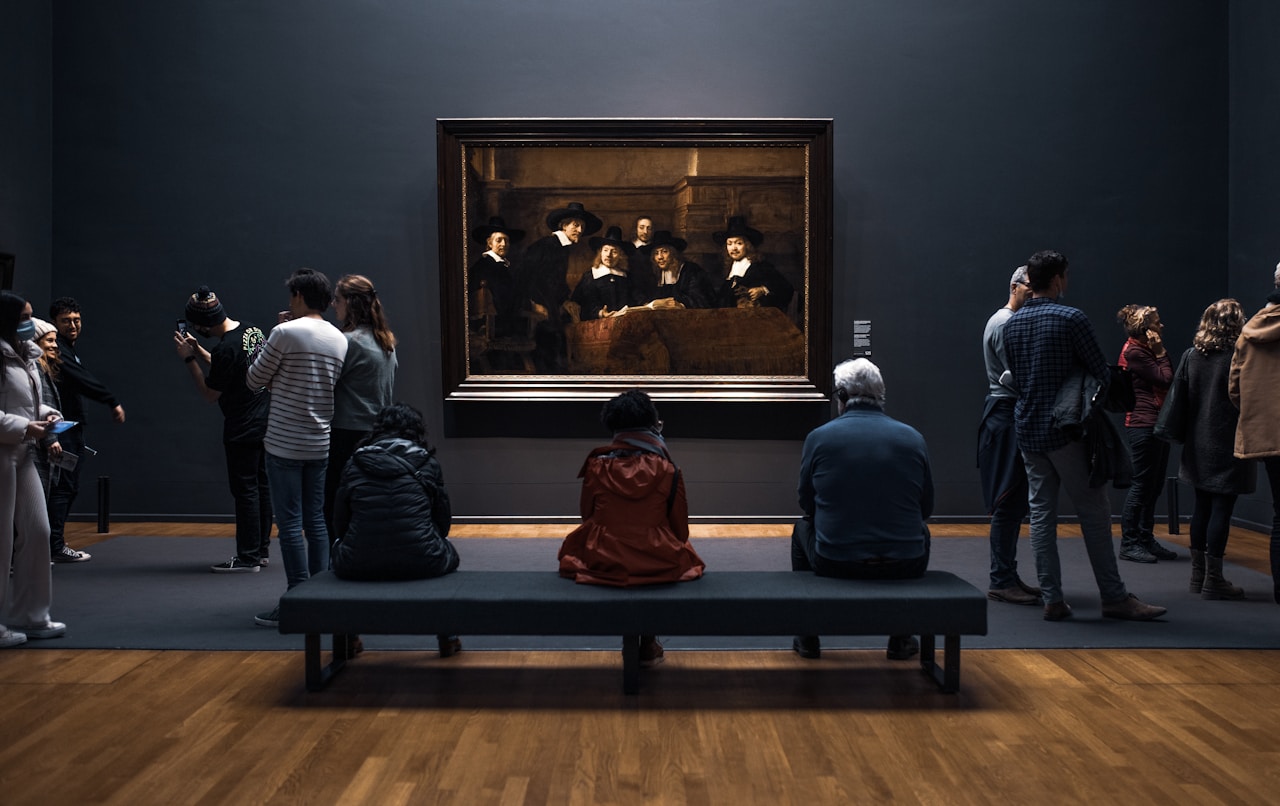
Amsterdam offers travelers an impressive array of must-visit attractions, from the historic Anne Frank House to the world-renowned Rijksmuseum housing Dutch masterpieces.
Beyond the iconic landmarks, visitors can discover unique experiences such as floating through picturesque canals on a boat tour or exploring the lively flower market at Bloemenmarkt.
The city’s blend of cultural heritage sites and distinctive local experiences creates an itinerary that captures both Amsterdam’s storied past and its dynamic present.
Must-Visit Landmarks and Museums
Amsterdam’s cultural landscape shines brightest through its world-class museums, with the Rijksmuseum’s Dutch masterpieces, Anne Frank House’s poignant historical narrative, and Van Gogh Museum’s impressive collection of post-impressionist works standing as essential experiences.
Visitors should consider purchasing tickets online weeks in advance, particularly for the Anne Frank House, which regularly sells out due to its limited capacity and international significance.
Morning visits or late afternoon entries often provide the best opportunity to avoid the longest lines, while museum cards can offer significant value for travelers planning to visit multiple institutions.
1. Rijksmuseum, Anne Frank House, Van Gogh Museum
When planning a visit to the Dutch capital, three cultural landmarks stand apart as essential experiences: the Rijksmuseum, Anne Frank House, and Van Gogh Museum.
Each institution offers powerful insights into art, history, and human resilience that capture Amsterdam’s lively spirit.
- Stand before Rembrandt’s “Night Watch” and feel centuries dissolve
- Ascend the hidden bookcase entrance to Anne’s secret annex
- Witness Van Gogh’s tortured genius through his brushstrokes
- Experience Dutch Golden Age masterpieces firsthand
- Reflect on humanity’s capacity for both creation and destruction
2. Tips for Tickets and Avoiding Long Lines
Securing admission to Amsterdam’s most beloved attractions requires strategic planning to maximize your experience and minimize waiting times.
Purchasing tickets online days in advance saves hours of queuing at popular sites like the Anne Frank House and Van Gogh Museum.
The I amsterdam City Card offers skip-the-line entry to many venues, while visiting during early morning or late afternoon hours substantially reduces wait times.
Unique Amsterdam Experiences Worth Adding to Your Travel Plan
Amsterdam offers visitors a wealth of unique experiences beyond its famous museums and landmarks.
Exploring the city by water during a canal cruise discloses a different perspective of the historic center, with specially designed nighttime tours showcasing illuminated bridges and waterfront buildings.
Wandering through lesser-known neighborhoods reveals hidden hofjes (courtyards) and local gems that most tourists miss but truly capture the authentic spirit of the city.
1. Canal Cruise Options for Day and Night
No canal experience in Amsterdam is complete without exploring the city’s iconic waterways from the unique vantage point of a cruise boat.
Various options await travelers seeking this quintessential Dutch experience, from romantic evening voyages with wine to historical daytime tours.
- Candlelit night cruises revealing illuminated bridges and buildings
- Small open boats offering intimate journeys through hidden canals
- Luxury dinner cruises featuring local Dutch cuisine
- Educational tours highlighting Amsterdam’s Golden Age architecture
- Specialty themed cruises including wine tastings and jazz performances
2. Neighborhood Walking Tours and Hidden Courtyards
While canal cruises offer spectacular views from the water, Amsterdam’s true character is perhaps best discovered on foot, wandering through its distinctive neighborhoods and stumbling upon hidden courtyards.
The city’s concealed hofjes (almshouse courtyards) in the Jordaan district, the lively street art of NDSM-wharf, and the architectural treasures of Oud-Zuid reveal Amsterdam’s multifaceted personality to those willing to explore beyond tourist paths.
Where to Stay: Amsterdam Travel Guide to Neighborhoods
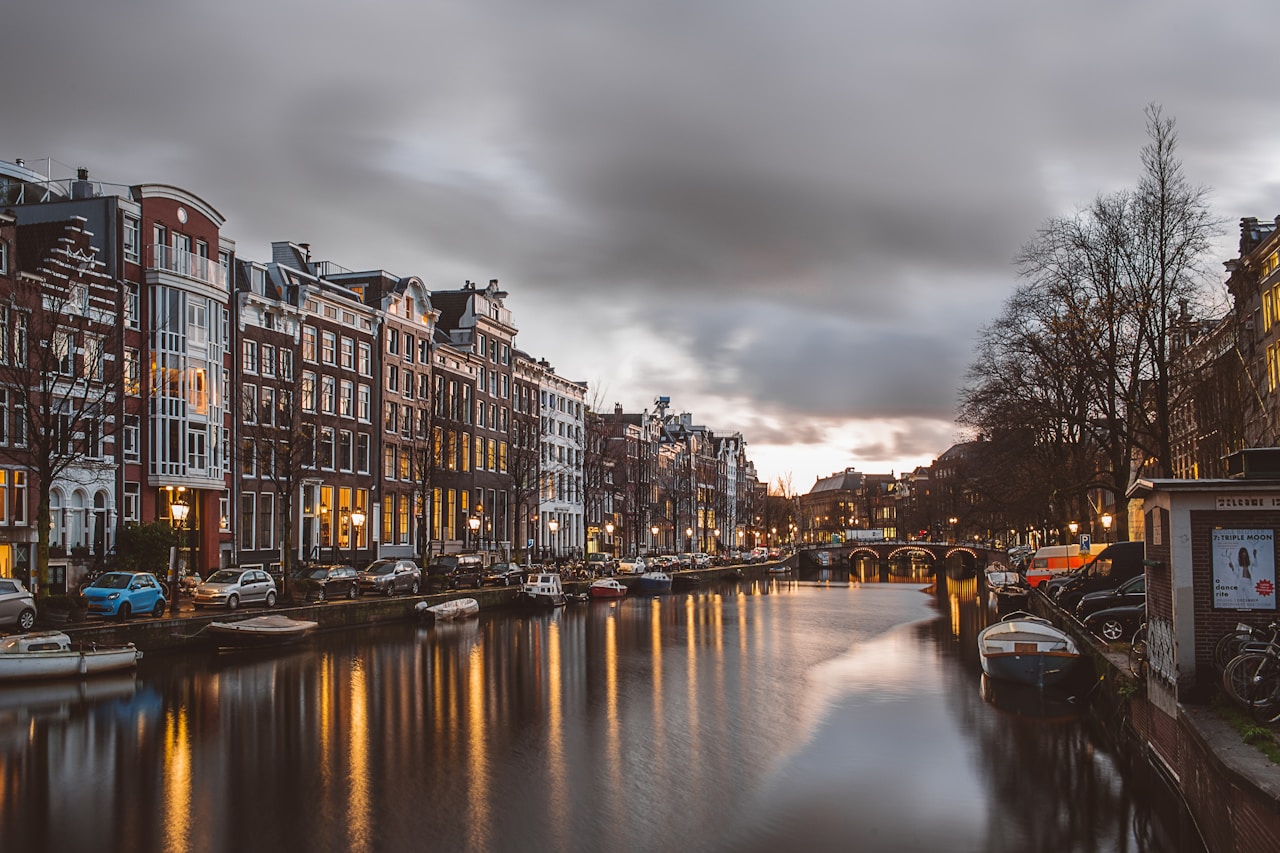
Amsterdam’s diverse neighborhoods offer accommodations for every type of traveler, from first-time visitors seeking central locations to returning guests exploring lesser-known areas.
Budget travelers might consider staying in Noord or Oost, while mid-range options abound in Jordaan and De Pijp.
Luxury seekers gravitate toward the Canal Ring and Museum Quarter.
Each district provides its own unique atmosphere, amenities, and proximity to attractions, making neighborhood selection an essential component of planning your Amsterdam experience.
Best Areas for First-Time Travelers and Return Visitors
First-time visitors to Amsterdam often face the choice between staying in the lively Jordaan, trendy De Pijp, or the up-and-coming Oud-West neighborhoods.
While Amsterdam’s City Centre offers iconic canal views and immediate access to major attractions, areas outside the Ring provide a more authentic local experience with lower accommodation costs.
Each neighborhood presents distinct advantages for travelers, with factors such as proximity to museums, nightlife options, and transportation connections playing essential roles in the decision-making process.
1. Choosing Between the Jordaan, De Pijp, and Oud-West
How does one choose between three of Amsterdam’s most beloved neighborhoods? Each area offers distinct character: Jordaan charms with historic canals, De Pijp buzzes with multicultural energy, while Oud-West delivers a perfect blend of trendy and residential vibes.
- Jordaan’s narrow streets whisper stories from centuries past
- De Pijp’s Albert Cuyp market awakens all senses at once
- Oud-West’s transformed industrial spaces inspire creativity
- Jordaan cafés invite lingering over coffee and conversation
- De Pijp’s lively nightlife promises unforgettable evenings
2. Staying in the City Centre vs. Outside the Ring
When deciding where to stay in Amsterdam, travelers face a fundamental choice between the bustling City Centre with its iconic canals and historic architecture or the more residential areas outside the A10 ring road.
The City Centre offers immediate access to major attractions and nightlife but commands premium prices.
Outside neighborhoods provide authentic local experiences, greener spaces, and better value, though require short transit journeys to reach tourist destinations.
Amsterdam Travel Guide Tips for Budget, Mid-Range, and Luxury Hotels
Amsterdam offers accommodations across all budgets, from historic canal houses converted to luxury hotels to affordable hostels perfect for backpackers.
Visitors seeking value should consider booking at least three months in advance during the April-September high season, while spontaneous travelers can find significant discounts during November-February.
Each neighborhood presents distinct lodging options—Jordaan and Canal Ring for boutique luxury experiences, De Pijp and Oud-West for stylish mid-range hotels, and Amsterdam Noord or Oost for budget-friendly alternatives with excellent public transport connections.
1. Recommendations for Each Category
Finding the perfect place to stay in Amsterdam can transform a good trip into an unforgettable experience.
Each accommodation category offers distinctive ways to experience this lively city, from canal-side hostels to luxury boutique hotels.
- Wake to birdsong in Jordaan’s intimate guesthouses
- Feel the pulse of nightlife from a hip Leidseplein apartment
- Experience old-world charm in a Canal Ring boutique hotel
- Live like a local in a De Pijp district rental
- Indulge in panoramic harbor views from a Noord waterfront suite
2. Booking Strategies During High and Low Seasons
Timing can make all the difference when booking accommodation in Amsterdam, where prices and availability fluctuate dramatically throughout the year.
For significant savings, travelers should target November through February, excluding holidays.
Book luxury hotels 3-4 months ahead, while budget options can be secured 6-8 weeks in advance during low season. Weekdays consistently offer better rates than weekends.
Eating and Drinking Around Amsterdam

Amsterdam offers a diverse culinary landscape that extends beyond the famous stroopwafels and cheese.
Travelers can savor authentic Dutch cuisine at cozy brown cafés, enjoy international fare at upscale brasseries, or experience innovative dining at Michelin-starred restaurants.
From canal-side eateries to hidden gems in neighborhoods like Jordaan and De Pijp, the city’s food scene rewards exploration with both traditional and contemporary flavors.
What to Eat During Your Amsterdam Travel
Exploring Amsterdam’s culinary scene reveals iconic Dutch dishes that reflect centuries of cultural heritage and maritime influence.
Travelers should sample traditional favorites like stroopwafels, bitterballen, herring, and rich Gouda cheese while wandering the city’s historic streets.
The lively Albert Cuyp Market and numerous street food vendors offer authentic tastes of local cuisine in casual, atmospheric settings perfect for food enthusiasts.
1. Iconic Dutch Dishes to Try
What culinary treasures await the hungry traveler in Amsterdam?
The Dutch capital offers a tantalizing array of iconic dishes that reflect its rich cultural heritage and seafaring history.
- Stroopwafels – warm caramel syrup pressed between thin waffle layers
- Bitterballen – crispy meatballs perfect with local beer
- Haring – raw herring served with onions, a daring delicacy
- Poffertjes – fluffy mini pancakes dusted with powdered sugar
- Stamppot – hearty mashed potatoes with vegetables, the ultimate comfort food
2. Local Markets and Street Food Spots
When hunger strikes while wandering through the charming streets of the Dutch capital, visitors can discover a thriving scene of local markets and street food vendors that showcase the best of Amsterdam’s culinary landscape.
Albert Cuyp Market offers authentic stroopwafels made fresh, while Foodhallen presents upscale street food in a converted tram depot.
For quick bites, FEBO’s automated vending walls serve traditional Dutch croquettes.
Where to Eat: Cafes, Brasseries, and Restaurants
Amsterdam offers dining establishments suitable for every scenario, from charming cafés perfect for solo travelers to romantic canal-side restaurants and lively brasseries welcoming families.
Reservations are essential for popular spots, particularly during peak dinner hours between 7-9 PM, while lunch typically sees smaller crowds and easier walk-in opportunities.
Dutch service differs from American style—waiters won’t rush diners through meals, checks aren’t automatically brought to tables, and tipping, while appreciated at 5-10%, isn’t mandatory as service charges are often included.
1. Family-Friendly, Romantic, and Solo-Friendly Dining Picks
Whether seeking a child-friendly eatery with high chairs and special menus, a candlelit spot for a romantic evening, or a welcoming space to dine solo, Amsterdam offers options for every type of traveler.
- De Pizzabakkers delights families with its fun atmosphere and child-sized pizzas.
- Moeders serves authentic Dutch comfort food in a quirky, photo-lined space perfect for solo diners.
- Blauw Amsterdam offers elegant Indonesian rijsttafel experiences for romantic evenings.
- NDSM Noorderlicht welcomes all with casual greenhouse dining along the waterfront.
- Foodhallen invites exploration with diverse international food stalls under one roof.
2. Reservations, Peak Times, and Service Style
Understanding Amsterdam’s dining culture and customs helps visitors maximize their culinary experiences in the city.
Popular restaurants require reservations, especially during peak tourist seasons (April-October). Most eateries serve dinner from 6-10pm, with locals typically dining later.
Service is unhurried, and diners must request the bill—lingering over meals is customary, not rushed as in some countries.
Shopping and Markets
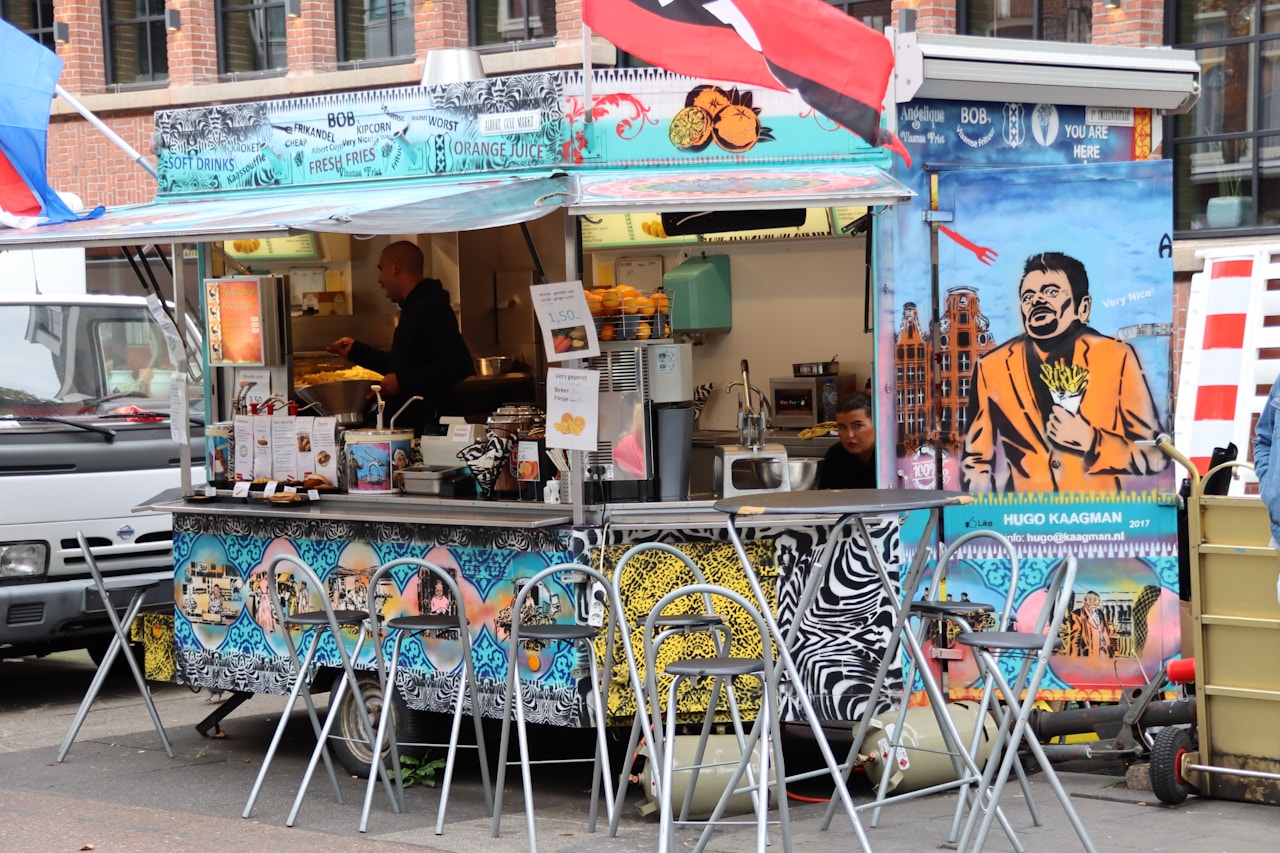
Amsterdam offers a lively array of local markets where travelers can immerse themselves in the authentic Dutch shopping experience.
From the famous floating Bloemenmarkt for tulip bulbs to the vintage treasures at Waterlooplein Flea Market, visitors will discover unique souvenirs that capture the essence of the Netherlands.
Beyond traditional clogs and cheese, shoppers can find distinctive Dutch design items, Delftware pottery, and local spirits like jenever in boutiques throughout the city’s charming neighborhoods.
Amsterdam’s Most Popular Local Markets
Amsterdam boasts lively local markets where visitors can experience authentic Dutch culture through shopping.
Albert Cuyp, Waterlooplein, and Noordermarkt offer everything from vintage clothing and antiques to fresh produce and handcrafted souvenirs.
Each market has ideal visiting times: Albert Cuyp thrives midweek mornings, Waterlooplein comes alive on weekdays, and Noordermarkt shines brightest on Saturday mornings with its organic farmers’ market.
1. Albert Cuyp, Waterlooplein, and Noordermarkt
Where can travelers experience Amsterdam’s authentic local culture and lively commerce firsthand?
The Albert Cuyp, Waterlooplein, and Noordermarkt markets offer colorful snapshots of Dutch life. Each market carries its own distinct character while showcasing local specialties.
- Albert Cuyp’s street food aromas wafting through De Pijp
- Waterlooplein’s vintage treasures awaiting discovery
- Noordermarkt’s organic produce from nearby farms
- Local artisans showcasing handcrafted Dutch designs
- Spontaneous street performers entertaining market-goers
2. What You Can Find and Best Times to Go
Maneuvering through Amsterdam’s popular markets rewards visitors with treasures from everyday necessities to one-of-a-kind souvenirs, but timing your visit strategically enhances the experience.
Albert Cuyp Market bustles most weekdays from 9-5, while Waterlooplein peaks on weekends.
Early birds catch the freshest produce at Noordermarkt on Saturdays, with its organic farmers’ market transforming into a textile and vintage haven by afternoon.
Unique Souvenirs and Where to Buy Them
Amsterdam offers distinctive souvenirs that capture the essence of Dutch culture, from creamy Gouda cheese wheels to fresh stroopwafels warm from local market stalls.
Independent boutiques throughout the Jordaan neighborhood showcase handcrafted artisan goods including Delft Blue pottery, traditional wooden clogs, and contemporary Dutch design pieces.
Savvy shoppers should visit smaller stores early in the day, bring cash for better bargaining opportunities, and remember that many boutique owners welcome negotiation on multiple purchases.
1. Dutch Cheese, Stroopwafels, and Artisan Goods
Few shopping experiences rival the sensory delight of browsing Dutch culinary treasures in the heart of the Netherlands.
Amsterdam’s markets and specialty shops showcase authentic delicacies and handcrafted items that embody centuries of Dutch tradition.
- Aged Gouda wheels with complex caramel undertones at Reypenaer
- Freshly pressed stroopwafels dripping with warm syrup
- Delft Blue ceramics handpainted by master artisans
- Lively tulip bulbs to cultivate memories at home
- Artisanal jenever in centuries-old distilleries
2. Tips for Shopping in Independent Boutiques
Beyond the bustling markets and mainstream shopping districts, Amsterdam’s independent boutiques offer treasure troves of unique finds that capture the city’s creative spirit.
Visitors should explore the Nine Streets area, arrive early at popular shops, and be prepared to negotiate prices respectfully. Many boutiques are closed on Mondays, so plan accordingly for the best shopping experience.
Day Trips and Places to Travel From Amsterdam
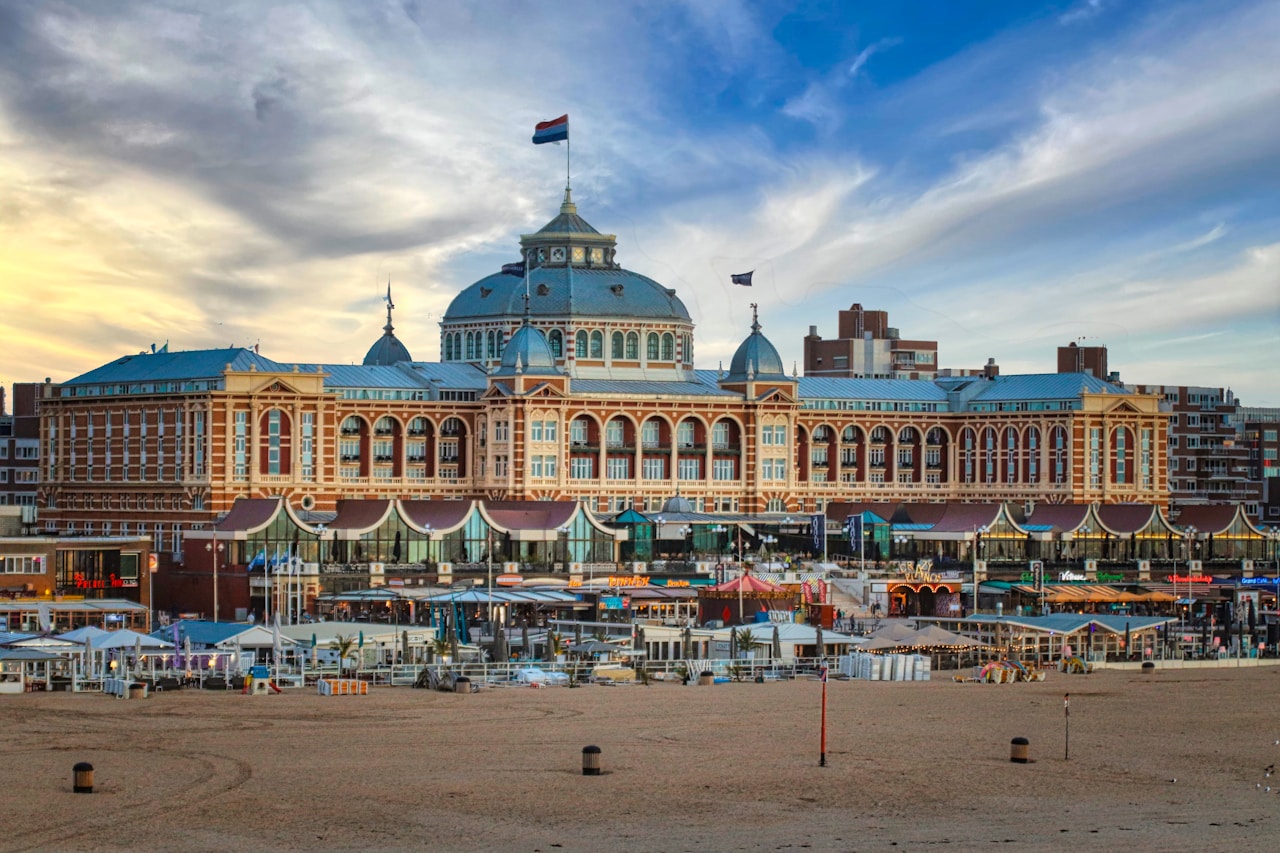
Amsterdam’s strategic location makes it an excellent base for exploring beyond the city limits, with numerous destinations easily accessible for day trips.
Visitors can explore the historic windmills of Zaanse Schans, the picturesque fishing villages of Volendam and Marken, or the magnificent tulip fields of Keukenhof in spring—all within an hour’s journey.
For those with more time, multi-day excursions to lively cities like Rotterdam, historic Utrecht, or even neighboring countries such as Belgium and Germany offer rewarding extensions to an Amsterdam holiday.
Best Places to Travel From Amsterdam for One-Day Excursions
Amsterdam’s prime location makes it an excellent base for exploring several enchanting Dutch destinations within a short travel distance.
Visitors can easily reach the picturesque windmills of Zaanse Schans, the charming medieval city of Haarlem, the canal-lined Utrecht, or The Hague with its political significance and cultural attractions.
Each destination offers unique historical and cultural experiences, accessible by efficient train services that depart regularly from Amsterdam’s Central Station.
1. Zaanse Schans, Haarlem, Utrecht, and the Hague
While the iconic canals and museums of Amsterdam captivate visitors, the surrounding regions offer equally enchanting experiences perfect for day trips.
Zaanse Schans showcases traditional windmills, while Haarlem charms with cobblestone streets.
Utrecht’s canals offer a quieter alternative, and The Hague impresses with royal architecture.
- Wander among the working windmills of Zaanse Schans, transporting you back to 18th-century Dutch life
- Lose yourself in Haarlem’s medieval charm and bustling market squares
- Climb Utrecht’s Dom Tower for breathtaking panoramic views
- Discover The Hague’s blend of political power and seaside relaxation
- Explore each destination’s unique cultural treasures without the Amsterdam crowds
2. How to Get There and What to See
Reaching the Netherlands’ most enchanting destinations from Amsterdam requires minimal planning thanks to the country’s efficient transportation network.
Frequent trains connect Amsterdam to Utrecht (25 minutes), The Hague (50 minutes), and Haarlem (15 minutes).
For Zaanse Schans, both buses and trains provide convenient options, with journeys taking approximately 20 minutes from Amsterdam Centraal station.
Planning Multi-Day Getaways
While Amsterdam offers plenty to explore, extending your journey with a multi-day getaway opens up new horizons across the Netherlands and neighboring countries.
Weekend trips to destinations like Utrecht, Rotterdam, or even Paris are easily accessible via the efficient train networks radiating from Amsterdam Centraal Station.
These longer excursions allow travelers to immerse themselves in different cultures and landscapes without the rush of returning the same evening.
1. Best Places to Travel From Amsterdam for Weekend Trips
Amsterdam’s strategic location in the Netherlands makes it an ideal launching point for numerous enticing weekend getaways.
Travelers seeking to expand their horizons beyond the city’s canals can easily reach diverse destinations within hours by train, car, or ferry.
- Wander through fairytale-like medieval streets of Bruges, Belgium
- Experience Paris’s legendary romance with an overnight train journey
- Explore Berlin’s lively arts scene and complex history
- Discover Copenhagen’s innovative design and culinary excellence
- Escape to the dramatic landscapes of Luxembourg’s Ardennes Forest
2. Using Trains to Explore the Netherlands and Beyond
The extensive railway network connecting Amsterdam to destinations throughout Europe represents one of the most convenient and environmentally friendly ways to explore beyond the Dutch capital.
Travelers can reach cities like Rotterdam, Utrecht, and The Hague in under an hour, while international destinations such as Brussels, Paris (city of Love), and Cologne are accessible within 3-5 hours on high-speed trains.
Cultural Tips and Etiquette for Visitors

Visitors to Amsterdam should familiarize themselves with local customs to navigate the city respectfully and meaningfully.
Understanding Dutch directness, cycling etiquette, and cannabis laws helps travelers avoid common cultural faux pas while exploring the capital.
Safety in Amsterdam requires awareness of pickpocketing in tourist areas, responsible behavior in the Red Light District, and careful navigation of the city’s many canals and bicycle paths.
Understanding Local Customs and Behaviors
Visitors to Amsterdam should be aware that bike lanes are sacred spaces, with cyclists having right-of-way and pedestrians needing to stay vigilant to avoid accidents.
Dutch society values orderly queuing in shops and attractions, while tipping is appreciated but not mandatory, with 5-10% being standard for good service.
Though many Amsterdammers speak excellent English, learning basic Dutch phrases like “dank je wel” (thank you) and “alstublieft” (please) can enhance interactions with locals and demonstrate cultural respect.
1. Bike Lanes, Queuing, and Tipping
Maneuvering Amsterdam’s cultural nuances requires awareness of three essential aspects of local etiquette: bike lanes, queuing customs, and tipping practices.
These unspoken rules govern daily interactions and help visitors blend seamlessly with locals.
- Never walk in bike lanes – cyclists won’t hesitate to ring bells aggressively
- Stand patiently in orderly queues – Dutch value efficiency and fairness
- Tip 5-10% for exceptional service – not mandatory but appreciated
- Respect the right of way – pedestrians yield to bikes, bikes to trams
- Maintain personal space – the Dutch prefer arm’s length conversations
2. Language and Communication in Daily Situations
Communication in Amsterdam strikes a balance between Dutch directness and international accessibility.
While Dutch is the official language, English proficiency is remarkably widespread. Amsterdammers appreciate visitors who attempt basic Dutch phrases like “dank je wel” (thank you), though they’ll likely respond in English.
Be prepared for straightforward communication—locals value honesty and efficiency over sugar-coating.
Staying Safe and Respectful While You Travel Amsterdam
Amsterdam, like any major tourist destination, requires visitors to stay vigilant against pickpocketing, particularly in crowded areas such as Dam Square, public transport, and the Red Light District.
Tourists should behave respectfully by following local norms: avoid photographing sex workers, maintain quiet in residential areas, and refrain from public intoxication despite the city’s liberal reputation.
In case of emergencies, visitors can contact the police at 112, seek assistance at tourist information centers, or visit the dedicated Tourist Doctor service for medical concerns.
1. Pickpocket Awareness and Public Behavior Guidelines
Unfortunately, tourists in Amsterdam occasionally fall victim to pickpockets, particularly in crowded areas like markets, public transportation, and popular attractions.
- Keep belongings secure and remain vigilant, especially in bustling Dam Square.
- Avoid displaying valuable items or large amounts of cash in public.
- Be wary of staged distractions or overly helpful strangers approaching abruptly.
- Respect quiet zones and maintain appropriate behavior in residential neighborhoods.
- Exercise caution when exploring Red Light District, never photograph workers.
2. Emergency Contacts and Tourist Assistance
When traveling in an unfamiliar city, having quick access to emergency contacts can make all the difference during unexpected situations.
Visitors to Amsterdam should save these essential numbers: 112 for emergencies, 0900-8844 for non-urgent police matters, and +31 20 551 3838 for tourist assistance.
The I amsterdam Visitor Centers provide multilingual support, city information, and help with lost items or travel disruptions.
Final Travel Amsterdam Essentials
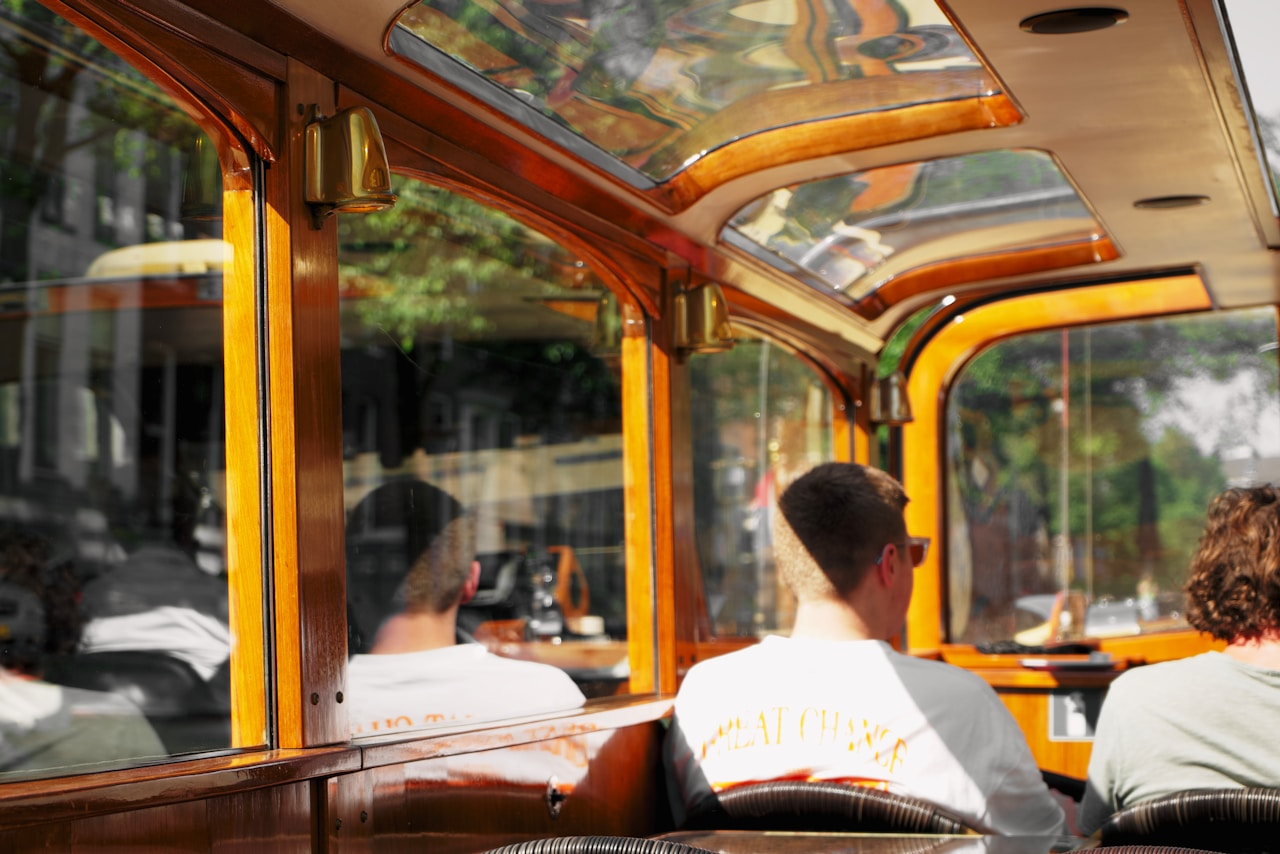
Strategic travelers can maximize their Amsterdam experience by employing money-saving strategies such as purchasing city passes and dining away from tourist centers.
Packing wisely according to Amsterdam’s temperamental weather requires layered clothing year-round, with waterproof items essential regardless of season.
Winter visitors should bring thermal wear and sturdy boots, while summer travelers benefit from lightweight clothing plus a light jacket for cool evenings along the canals.
Amsterdam Travel Guide Tips for Saving Money
Exploring Amsterdam on a budget requires strategic planning around transportation, dining, and attractions.
Travelers can greatly reduce expenses by utilizing city passes, eating at local markets, and taking advantage of numerous free activities throughout the city.
The Dutch capital offers countless cost-free scenic spots, including picturesque canal walks, public parks, and hidden courtyards that showcase authentic Amsterdam without spending a Euro.
1. Budget-Friendly Transport, Food, and Attractions
Amsterdam’s charm needn’t come with a hefty price tag for budget-conscious travelers.
The city offers numerous economical options for experiencing its unique culture without breaking the bank.
- Rent bicycles for €10/day to explore like locals
- Sample €3-5 stroopwafels at Albert Cuyp Market
- Visit free museum gardens during sunny afternoons
- Enjoy canal views with €2 supermarket picnics
- Take advantage of free ferry rides across the IJ
2. Free Activities and Scenic Spots
Although Amsterdam’s museums and canal tours often feature prominently in travel itineraries, the city offers a wealth of completely free activities and picturesque spots that highlight its unique character.
Visitors can explore Vondelpark’s expansive green spaces, wander through the historic Jordaan neighborhood, or admire street art in NDSM Wharf.
The flower market and panoramic views from the public library’s top floor provide memorable experiences.
Packing Advice Based on the Season
Visitors to Amsterdam should pack according to the city’s notoriously changeable weather patterns while keeping their luggage manageable for traversing narrow canal streets.
Winter travelers need waterproof boots and insulated layers, while summer guests benefit from breathable clothing plus a light raincoat that can be easily carried during bicycle excursions or museum visits.
Regardless of season, comfortable walking shoes remain essential for exploring the cobblestone streets, alongside a compact daypack that accommodates both souvenirs and unexpected weather shifts.
1. Clothing and Gear for Amsterdam’s Weather
When packing for a trip to Amsterdam, travelers should prepare for the city’s notoriously changeable weather patterns and distinctly seasonal climate.
Proper gear guarantees exploration without weather constraints.
- Waterproof jacket that folds easily into a daypack
- Comfortable walking shoes that can handle cobblestones and rain
- Layering pieces for quick temperature adjustments
- Compact umbrella for sudden showers
- Sunglasses for those surprising brilliant days
2. Travel Light Yet Prepared for Every Experience
Amsterdam’s seasonal variations call for strategic packing that balances preparedness with mobility.
Travelers should prioritize versatile items: a waterproof jacket, comfortable walking shoes, and layers regardless of season.
Summer requires light clothing and sunscreen, while winter demands thermal layers and waterproof boots.
A compact daypack accommodates essentials during lengthy explorations through the city’s diverse neighborhoods and attractions.
Wrapping Up
Amsterdam’s timeless charm lingers like morning mist over its canals, beckoning travelers to return. From world-class museums to lively markets, this compact city delivers rich experiences at every turn.
Whether cycling through historic streets or savoring stroopwafels at a café, Amsterdam rewards those who embrace its unique rhythm.
Pack comfortable shoes, respect local customs, and prepare to fall under the spell of this Dutch masterpiece.
Most Asked Question
What is frowned upon in Amsterdam?
While Amsterdam is known for its liberal atmosphere, certain behaviors are considered disrespectful or are legally prohibited:
- Public consumption of cannabis or alcohol: Despite the city’s tolerance, consuming these substances in public spaces is illegal and frowned upon by locals.
- Photographing sex workers: Taking photos in the Red Light District, especially of sex workers, is strictly prohibited and seen as highly disrespectful.
- Walking in bike lanes: Amsterdam is a bike-friendly city, and pedestrians are expected to stay off designated bike paths to avoid accidents and annoyance.
- Being late: Punctuality is valued in Dutch culture; arriving late for appointments or meetings is considered impolite.
What does the 3 x’s mean in Amsterdam?
The three X’s (XXX) seen throughout Amsterdam represent Saint Andrew’s Crosses. Saint Andrew, the patron saint of Amsterdam, was martyred on an X-shaped cross in the 1st century AD. These crosses have been part of the city’s coat of arms since the 16th century and are featured on the official flag, symbolizing Amsterdam’s heritage.
How many days in Amsterdam are enough?
Any Amsterdam travel guide will recommend 3 to 4-day visit is ideal to experience Amsterdam’s key attractions, including its renowned museums, historic canals, and vibrant neighborhoods. This duration allows for a balanced itinerary, offering time to explore cultural sites, enjoy local cuisine, and perhaps take a day trip to nearby areas.



